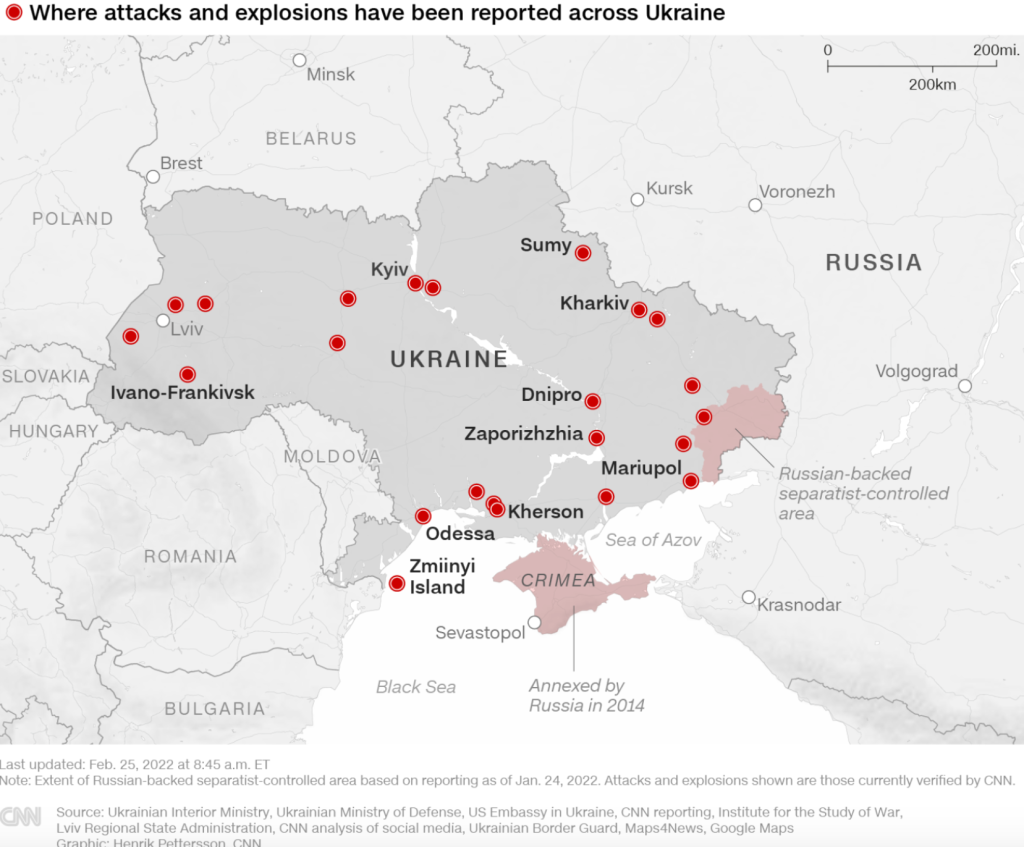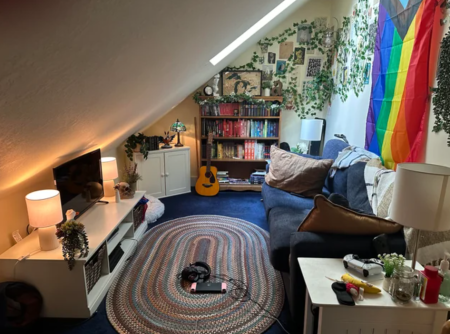Abstract
The history of the Kovalevs family is explored in the current study. The article traces the roots of Kovalevs to authentic blacksmiths. The art originated in Eastern Europe and especially Eastern Prussia (Poland). The name Kovalev underwent an evolution from Kowalski, then Koval altered Kovalev. The changing of the names is attributed to the linguistic and cultural differences the family interacted with. The Kovalevs family journey was through Poland, Russia, and beyond. The paper draws attention to the pivotal moment in early 17th-century history. Kovalski’s family assumed a noble by navigating an alliance and unexpected events. A vigorous interaction between geopolitical trends led to the migration of the Kovalevs family. Cultural changes and adaptation are underlined by the Kovalevs family’s migration patterns. The family’s journey starts near Nordenburg into Eastern Ukraine to the Kuma River region. There were challenges in the post-revolutionary period in Russia caused by political temperatures and personal struggles. The situation made families like Zakhar Kovalevs underwent perseverance. The account also draws on parallels between historic echoes and the current state of affairs in Russia. The journey of the Kovalev family reflects the wider patterns of Russian history. The migrations also underscore the importance of historical knowledge in dealing with modern challenges. The story of their existence is a testament to their resilience. The account also confirms adaptation and complex fusion between personal and global narratives that have taken place over generations.
Key words: Kovalevs family, Revolution, Russian history, Geopolitics
Kovalevs’ Family Journey from Prussia (Poland) To Eastern Ukraine, And Russia
The Meaning and Origins of the Kovalevs’ Name
Kovalevs name originates in Eastern Europe, mainly Ukraine. The family name Kovalevs is derived from the Ukrainian word ‘kach’which means blacksmith (McCord, 2013). The Kovalevs family had been skilled in the art of blacksmithing. Art has been regarded as a profession in manufacturing essential tools and armour since the Middle Ages. The surname served to distinguish those skilled metalworkers within their communities. The name was passed down through generations as the family’s occupational identity. Blacksmiths played a critical societal role in practical terms. The art also symbolized words linked to magic and transformation.
Variations of the Kovalevs name and its meaning
There are various variations in the family name Kovalevs from region to region and culture. It’s usually known as Komalev or Kovalevsky in Ukraine (Kovaleva, 2023). The Ukrainian word ‘kovalev,’ which means “Blacksmith,” is the source of these variations. The name Kovalev or Kovalevich is frequently used across Russia. It’s also referred to by the name of Kovalyov or Kolkovovski in Belarus. In Poland, the term is modified to Kowal or Kowalski. In the Czech Republic and Slovakia, it becomes Kováč or Kováčik.
Variations of this name in other countries include Kovalenko, also present in Ukraine and Russia. ‘Kovalsky’ is from Poland to Belarus. Despite the slight difference in pronunciation, all these variations refer to the same root word. The interpretations illustrate how blacksmiths have played a significant role in history. The varied types of Koval’s name were influenced by different cultures and linguistic changes over time.
Title Conferment and Historical Role (1521 – 1524)
Kovalski’s family has made contributions to history since the early 17th century. All the elements needed to make a great story were there. The components include gallant names, early families, and unpredicted connections. Lord Moritz von Gehlen, Edler Herr von Nordenburg, was a figure steeped in grandeur. He made his mark in the late 16th century (McCord, 2013). In April 1521, he was formally bestowed with the title of “Edler Herr” by Albert, Duke of Prussia. Charles V, an Emperor of the Holy Roman Republic, heard the noble acknowledgment.
This was formally ratified by the Holy Roman Emperor Charles V in 1524. The sanction gave them a more significant role and responsibilities. This decree marked a defining moment under the imperial seal. In addition, it anchored the family in structures of power and recognized their enduring contributions to the Holy Roman Empire. The imperial sanction has brought prestige. The ratification brought influence and increased responsibilities.
Emergence of the Kovalski Family (Early 17th Century)
The ancient history of Kovalevs came about with the emergence of Kovalski’s family at the beginning of the 17th century (Kowalski et L., 2020). The family was dynamic in culture, society, and politics. In the 17th century, there was a transformation period. The era was marked by religious and political upheavals. All these led to the development of the Kovalski family and its identity.
The Kovalskis evolved from geographical influences, commercial interests, and involvement in critical historical events. Given the nature of surnames, “Kovalski” suggests a potential association with the blacksmithing trade. The family members were proficient craftsmen and contributed to their community’s material needs.
The Ascend to the custodianship of a distinguished title
Kovalev formed strategic alliance with Moritz family, which elevated them to the keeper of one of their titles in this story. The labyrinth of fates and unions led to the entire line of Lord Moritz’s ancestors becoming extinct. This situation opened up an opportunity for the Kovalski family to take on guardianship duties (Feferman et al., 2021).
The entry of the Kovalski family in a line of succession was set by the death of its direct heirs to that particular title. It was a combination of strategic alliances built over time that would benefit the Kovalski family. In addition, it could put them in an advantageous position regarding influence and inheritance.
Migration and Cultural Interplay (17th – 18th century)
In the 17th and 18th centuries, Poland’s migration to eastern Ukraine was a necessary transition period. The move involved a significant population shift and exchange of culture. Geopolitical changes have affected this movement (Fischer-Kowalski, 2023). Polish immigrants were often motivated by economic opportunities and incentives offered by the state. These factors led them to move to Eastern Ukraine as the Polish-Lithuanian Commonwealth expanded. The settlers and peasants brought their cultural traditions to their agricultural and administrative practices.
These migrants had an important role to play in shaping Eastern Ukrainian society. The emigrants contributed to the development of a multi-ethnic society. The language and religious practice of the Polish was felt (Erőss et al., 2021). There was the establishment of Polish estates and manors. These lands had an impact on local economies. The migration involved a cultural mix between Poland and Ukraine, which resulted in social and policy conflicts. The distinctive character of Poland’s community in Eastern Ukraine was diminishing.
It is a chapter that involves cultural enrichment and social challenges. There was a varied cultural landscape in eastern Ukraine. The remnants of Polish influence hang in the air, and the legacy of this migration remains.
Fusion of Polish and Ukrainian cultures
A combination of languages, customs, and even surnames created a distinct interconnection between Poland’s and Ukraine’s cultures (Barwiński, 2019). The surname changes had become symbols of fusion and provided the language bridge between cultures.
The name with origins of blacksmithing: “Kowalski,” or “or” kovalski’ changed. As this Polish cognomen intermixed with the Ukrainian land, it metamorphosed. The new name “Koval” or “Kovalenko” emerged. Signifying a name with a common past of artistry and toil. Over generations, the evolution of this surname continued. The title bore witness to the narrative of Polish migrations and Ukrainian influences. An echo of the historical story that ran across diverse lands, from Poland through Ukraine to Russia.
Ukrainian migration to Poland after the Russian invasion
The journey of the Kovalevs family began in the Kaliningrad region (Stoicescu et al., 2023). The move is rooted in history and reflects the complex history of the family. Kaliningrad is situated on the Baltic Sea. It has undergone various geopolitical transformations. The change contributed to the family’s unique historical narrative. Kaliningrad (Knigsberg) was found within Poland. The culture of Kaliningrad greatly influenced the family of Kovalevs. There were remains of ancient Prussian and German culture which mixed with Kovalevs’ family culture. After world war II, there were so many dynamics. Kaliningrad joined the Soviet Union which changed its traditions, administration and identity. The Kovalevs family bounced back to the new governance.
Kaliningrad was the departure town of Kovalevs family journey. The integrations of the Kovalevs family with the people of Kaliningrad town formed pertinent part of history. The interaction with the Prussian, German, and Soviet transitions influenced them (Kudžmaitė, 2022). They gave rise to migration, which echoed their cultural and historical roots across the landscape.
Ancient histories indicate that Kovalev’s family had moved from Kaliningrad into eastern Ukraine (Koval History, Family Crest & Coats of Arms, n.d.). Migration is an essential step in their history. This migration leads to a journey of great geographic distances. The move affected historical events, political developments, and economic opportunities. Transitioning from the Kaliningrad region to eastern Ukraine represents a trend of wider Eastern Europe’s dynamics.
The footsteps of the Kovalev family took them further into the Russian River Kuma. The transfer from Kaliningrad to the Kuma River Region provided a thematic narrative. The shifts of culture are played out. This journey revealed the adaptability and resilience of a family because of historical events, societal change, or economic opportunity. The importance of the Kuma River is a cultural and geographical crossroads. This area is where the Kovalev family met new landscapes, communities and influences. This area further shaped their identities and narratives in the Russian landscape.
Challenges Post-Revolution (1917 and Beyond)
The revolution in Russia affected the life the people in Russia (Etkind, 2013). Kovalevs was among the families affected. There were continuous conflicts which lead to the formation Soviet Union. There were economic changes, land tenure reforms and change in politics. Kovalevs family was displaced and forced to adapt new norm.
There were limited Job opportunities and freedom under the new government in Russia. people’s lives were highly affected including the Kovalevs family (Kovalev, 2017). The family portrayed adaptation and bounced back to the repressions. There was low ranking officer in this era named Zakhar Kovalev before 1917. Zakhar encountered many challenges as well (Tucker, 2008). Most families fled to other countries for safety. Other people like Zakhar were forced to remain back even though he lost all his relatives. When he was dying, he gathered courage to account for his life origin.
Zakhar family’s roots were in Eastern Ukraine (ILM Institute, 2023). He had been strategically relocated to protect Russia’s borders against the southward incursions of nomads. The family’s historical importance in supporting Russian geopolitical interests has been underlined. In the thick tapestry of Russian history, Zakhar Kovalev’s journey connects personal identity. He also linked geopolitical strategy to create a narrative of defiance, adaptation, and complexity. It was mainly on how to hide one’s noble heritage against revolutionary upheaval.
Reflections on Historical Echoes (Present)
A comprehensive landscape emerged, created by the interplay of policy dynamics and individual struggles. These were made to the citizens within Russia from the Soviet era to today’s (Kovalev, 2016). The need to conceal true convictions is reflected in the current political climate of Russia. People often feel compelled to hide their true feelings. The citizens also fear consequences under a government on political dissidents and free speech. Such an approach is in line with past trends of concealing identity similarly, as it happened in the early periods of political uncertainty.
The Russian government’s external hostility has become an important element that overshadows ordinary people’s struggles. Geopolitical confrontations divert attention and resources (Kovalev, 2017). The diversion leaves the citizens wrestling with the challenges of everyday life. In addition, they make citizens struggle with the overall impact of external policies. These two parallel systems create a complex social policy environment. These systems are the situation in which individual stories and struggles are frequently ignored by broader geopolitical narratives. The current status of many in Russia influences how it decides to disclose or conceal within an ever-changing policy landscape. The atmosphere is characterized by balancing personal convictions with foreign pressures.
Reflections on Historical Echoes (Present)
The importance of understanding history to navigate the complexities is underlined by the Kovalevs family’s historical journey (Kovalev, 2021). The account includes titles conferred on them and Russia’s Revolution. The Kovalevs family acknowledges the invaluable lessons in its tale by looking back on their past. Past experiences, such as the Russian Red Terror of the 1930s, underline the recurrent nature of conflict in society. The experience of the Kovalevs family is a metaphor for the broader patterns of Russian history. The situation reveals the continuity of challenges and adaptations.
In responding to the challenges of this age, Kovalevs journey stand as a reminder of the enduring relevance of history. The Kovalski family portrayed perseverance and unwavering determination (Kovalev, 2016). These character traits have made them an integral part of this historical narrative and have been intricately integrated. They had risen to the position of guardians of this unique title. The ascend happened under a series of fortunate events and alliances.
References
Barwiński, M. (2019). Geographical, historical and political conditions of ongoing and potential ethnic conflicts in Central and Eastern Europe. European Spatial Research and Policy, 26(1), 149-173.
Erőss, Á., Kovály, K., & Tátrai, P. (2021). Ethnic categorization practices and boundary (re) making in a multiethnic borderland of Ukraine. Border and Regional Studies, 9(4), 173-198.
Etkind, A. (2013). Internal colonization: Russia’s imperial experience. John Wiley & Sons.
Family Crests & Arms 302 Eastern Blvd – 1035 Rochester, NY 14424 United States. https://crestsandarms.com/pages/koval-family-crest-coat-of-arms
Feferman, K., Dahlin, J., Noordenbos, B., Norris, S. M., Koposov, N., Soroka, G., & Barnes, S. A. (2021). The Future of the Soviet Past: The Politics of History in Putin’s Russia. Indiana University Press.
Fischer-Kowalski, M. (2023). On the Mutual Historical Dynamics of Societies’ Political Governance Systems and their Sources of Energy. The Approach of the Vienna School of Social Ecology. Historical Social Research/Historische Sozialforschung, 48(1), 170-189.
ILM Institute (2023). original newsbreak com. https://ilm.iou.edu.gm/members/communistpartyy/
Koval History, Family Crest & Coats of Arms. House of names. https://www.houseofnames.com/koval-family-crest
Kovalev, A. A. (2017). Russia’s dead end: An insider’s testimony from Gorbachev to Putin. U of Nebraska Press.
Kovalev, A. A. (2017). Russia’s dead end: An insider’s testimony from Gorbachev to Putin. U of Nebraska Press.
Kovalev, M. (2016). Law and (verbal) order: The politics of Russian obscene language from Soviet Russia to the present day. Zeitschrift für Slavische Philologie, 323-347.
Kovalev, M. (2021). Shaping the past and comprehending the present: The World of Russian émigré textbooks in the 1920s–1930s. Czech-polish historical and pedagogical journal, 13(1), 55-68.
Kovaleva K. (2023) Meaning and Origin. Igenea. https://www.igenea.com/en/surnames/k/kovaleva
Kowalski, K., Matera, R., & Sokołowicz, M. E. (2020). The Role of Immigrants in the ‘Take-Offs’ of Eastern European ‘Manchesters’. Comparative Case Studies of Three Cities: Lodz, Tampere and Ivanovo. Journal of Migration History, 6(3), 269-299.
Kudžmaitė, G. (2022). Exploring cultural margins and liminalities through visual and material culture: the case of Kaliningrad as presented in guided tours. Journal of Baltic Studies, 53(1), 19-46.
McCord C. (2013). Exploring The Fascinating History of the Kovalev Family. Edumanias. https://edumanias.com/life-style/exploring-the-fascinating-history-of-the-kovalev-family/
Stoicescu, K., Nazarov, M., Giles, K., & Johnson, M. (2023). How Russia went to war: The Kremlin’s Preparations for its Aggression against Ukraine.
Tucker, J. G. (2008). The Significance of Alterity or “Otherness” in Crime and Punishment: Russian Culture and Western Change. In Profane Challenge and Orthodox Response in Dostoevsky’s Crime and Punishment (pp. 181-208). Brill.














